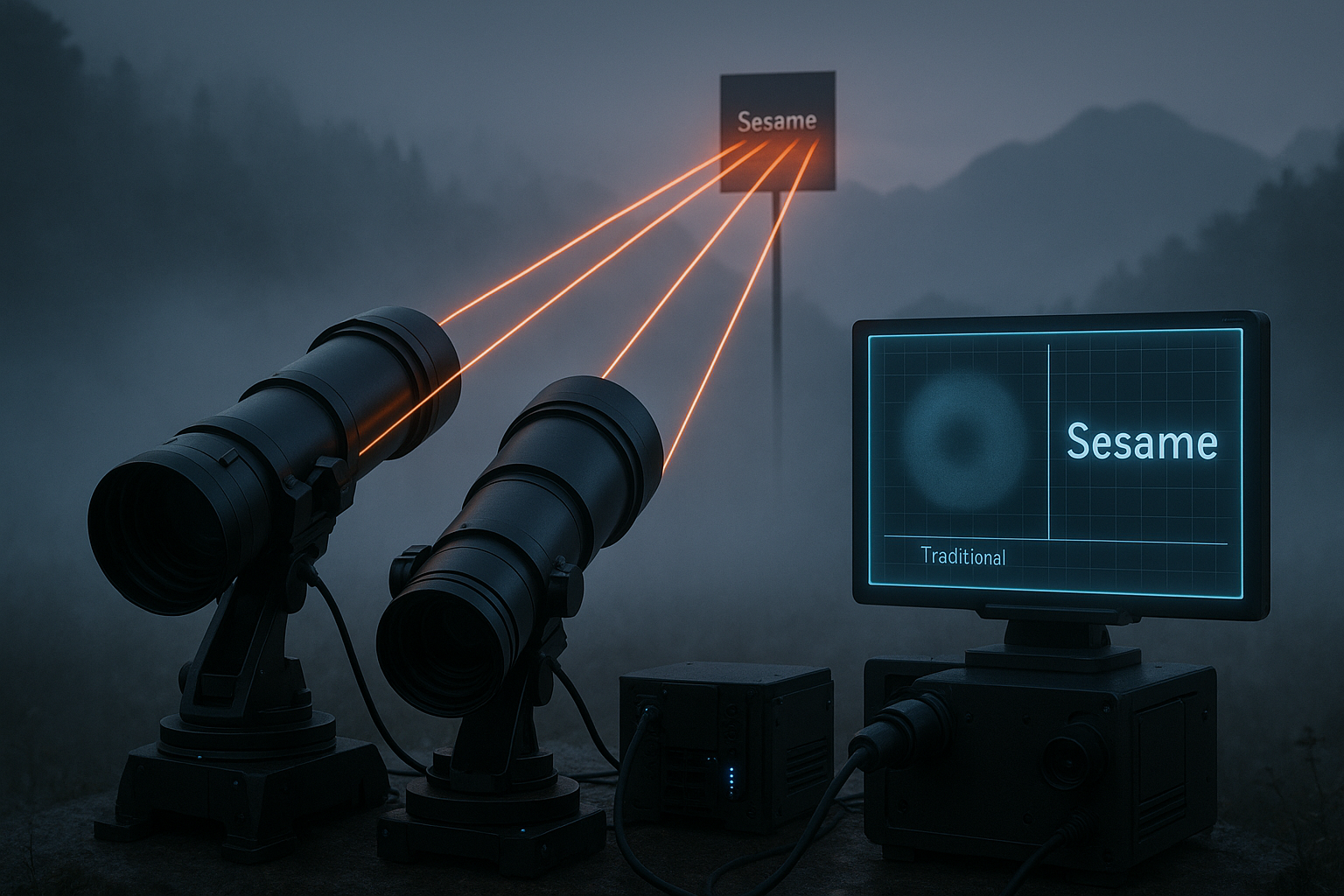Chinese Invents Laser Tech That can read A Book from A Mile Away
In what feels like a plotline lifted straight out of a futuristic spy novel, Chinese researchers have unveiled a groundbreaking laser-based imaging system capable of resolving text as minuscule as a sesame seed—just 1 millimeter wide—from an incredible distance of 1.36 kilometers (0.85 miles).
To put this into perspective, that’s roughly the length of 14 football fields laid end-to-end. This remarkable leap in remote imaging technology utilizes a technique called active intensity interferometry, which transcends the limitations of conventional telescopes, binoculars, and high-powered lenses.
Traditional optical systems often falter over long distances due to atmospheric distortion and diffraction limits, but this new system breaks those barriers entirely.
How It Works: A Quantum Leap in Imaging
Traditional optical imaging relies on capturing light waves directly, but turbulence in the air scatters and blurs these waves over vast distances, making fine details nearly impossible to discern. The team from the University of Science and Technology of China took a radically different approach:
- Laser Illumination:
The system fires eight infrared laser beams at its target—for instance, reflective letters just 3 millimeters tall. These lasers illuminate the object with precision, allowing for controlled data collection even across vast distances. - Interferometry Magic:
Instead of capturing the image itself, two telescopes record the intensity fluctuations of the reflected laser light. By analyzing how these fluctuations correlate between the two telescopes, the system reconstructs the target’s shape with an astonishing 14 times sharper resolution than what a single telescope could achieve under similar conditions. - Quantum Advantage:
At the heart of this innovation is a quantum phenomenon known as photon bunching, where particles of light interfere in ways that classical physics cannot predict. This allows the system to extract minute details invisible to traditional optics.
The results are nothing short of extraordinary: while a standard telescope would only resolve features as large as 42 millimeters at 1.36 kilometers, this system can detect details as small as 3 millimeters—fine enough to read tiny text or identify intricate patterns.
Applications: Beyond Spy Fantasies
While the potential for surveillance dominates headlines, the real-world applications of this technology extend far beyond espionage. Here are some promising use cases:
- Archaeology:
Researchers could scan ancient cliff carvings or inscriptions without risking dangerous climbs or disturbing fragile sites. - Ecology:
Wildlife biologists could monitor animal behavior or assess crop health from kilometers away, minimizing human interference. - Infrastructure:
Engineers could remotely inspect micro-cracks in bridges, dams, or other critical structures, ensuring safety without costly physical inspections. - Space Exploration:
Space agencies could track orbital debris by illuminating objects with lasers, enhancing our ability to manage space traffic and prevent collisions.
Limitations and Ethical Questions
Despite its revolutionary capabilities, the system isn’t without constraints:
- No Stealth Mode:
Targets must be illuminated by the laser beams, making covert operations impossible. - Weather Dependency:
Fog, dust, or heavy rain can degrade performance significantly. - Precision Demands:
Aligning the lasers and telescopes requires meticulous calibration, adding complexity to deployment.
Ethical concerns also loom large. High-resolution remote sensing at such distances raises significant privacy issues, particularly if misused for unauthorized surveillance. Experts emphasize the need for robust international guidelines to regulate the technology’s development and application.
What’s Next? AI and Adaptive Optics
The research team isn’t resting on their laurels. Future improvements will focus on integrating advanced technologies to enhance the system further:
- AI Algorithms:
Machine learning models will accelerate and refine image reconstruction, enabling faster processing and more accurate results. - Better Laser Control:
Sharper targeting mechanisms and adaptive optics will improve adaptability to atmospheric noise, boosting reliability in challenging environments.
Published in Physical Review Letters, this breakthrough marks a paradigm shift in imaging science. It underscores how cutting-edge innovations continue to blur the line between fiction and reality, proving that even the wildest sci-fi dreams can become scientific fact.





